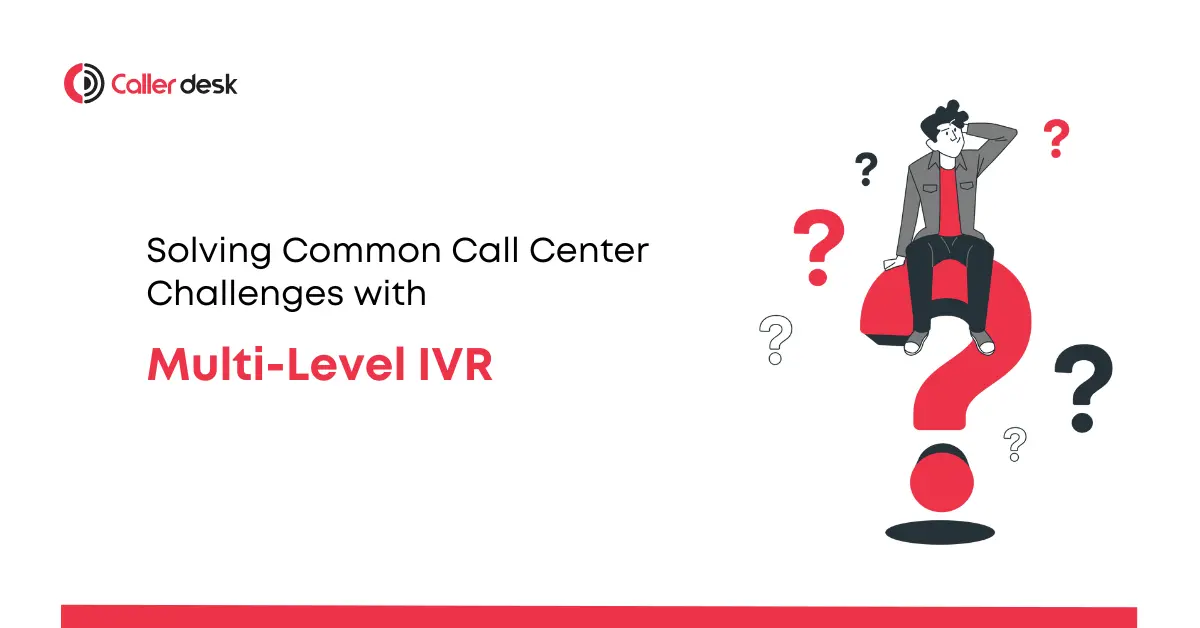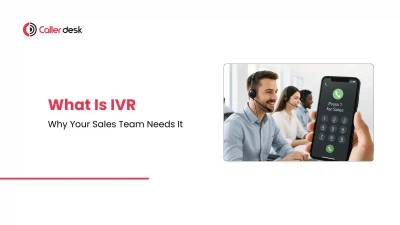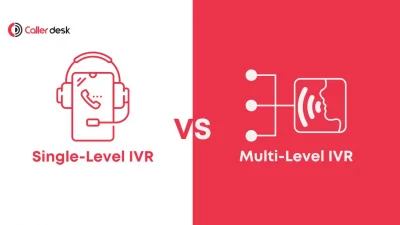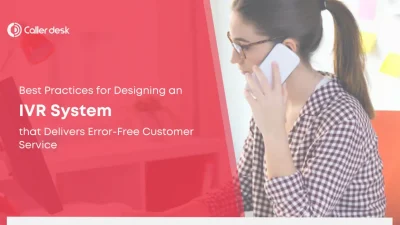Call centers are at the heart of customer service, and their performance can significantly impact a business’s reputation and success. However, outdated or poorly implemented systems often lead to long wait times, misrouted calls, and frustrated customers. These inefficiencies not only harm customer satisfaction but also strain operational resources.
This is where Multi-Level IVR (Interactive Voice Response) comes in—a cutting-edge solution designed to streamline call center operations and elevate customer experiences. By automating call routing, offering self-service options, and ensuring efficient resolutions, Multi-Level IVR has become a game-changer for modern businesses.
In this guide, we’ll delve into the common challenges of Multi-Level IVR systems, their practical solutions, and the transformative benefits they bring to businesses striving for excellence in customer service.
Common Challenges of Multi-Level IVR and Solutions
1. Complexity in Menu Design
Challenge: Complicated menu structures can overwhelm customers, making it difficult for them to navigate and find solutions quickly. This can result in call abandonment and dissatisfaction.
Solution:
- Simplify Menus: Limit each level to 3-4 options and structure menus logically to make navigation intuitive.
- Use Clear Language: Ensure menu prompts are concise and easy to understand, avoiding technical jargon.
- Test and Optimize: Regularly conduct user testing to identify pain points in the menu design and make improvements.
Example:
A healthcare provider redesigned its IVR system to focus on common inquiries like appointment scheduling, prescription refills, and insurance claims. This change reduced call abandonment rates by 25% and increased patient satisfaction by 20%, as customers were able to resolve issues faster.
2. Misrouted Calls
Challenge: Incorrect call routing leads to longer wait times and frustrated customers, increasing the likelihood of negative feedback.
Solution:
- AI-Powered Call Routing: Leverage AI to analyze caller input and intent, ensuring accurate routing.
- CRM Integration: Combine IVR with CRM systems to use customer data for personalized routing, such as sending VIP customers to priority agents.
Example:
A telecommunications company integrated its IVR with CRM data, ensuring high-value customers were routed to senior agents immediately. This improved resolution times by 30% and enhanced customer loyalty.
3. Overwhelming Submenus
Challenge: Customers often become frustrated if they have to navigate through multiple layers of menus to reach the desired option.
Solution:
- Prioritize Common Needs: Identify and place the most frequent customer queries at the top menu level.
- Enable Voice Commands: Allow customers to use natural language commands to bypass menus.
- Quick Access to Live Agents: Always provide an option for customers to connect with a live agent easily.
Example:
An e-commerce retailer simplified its IVR by prioritizing order tracking, returns, and payment issues in the main menu. This streamlined navigation and reduced customer frustration by 40% during peak holiday sales.
4. Lack of Personalization
Challenge: A generic IVR experience can feel impersonal, leaving customers disengaged and requiring them to repeat information multiple times.
Solution:
- Personalized Greetings: Use customer data to address callers by name and reference their recent interactions.
- Dynamic Menus: Tailor menu options based on customer profiles or past inquiries for a more relevant experience.
Example:
A travel agency implemented personalized IVR greetings, such as “Welcome back, [Customer Name]. Would you like to check your upcoming trip details?” This boosted repeat bookings by 20%.
5. Handling High Call Volumes
Challenge: Call centers often face challenges during peak hours, with overwhelmed systems leading to delays and dissatisfied customers.
Solution:
- Scalable Cloud IVR: Use cloud-based solutions that scale dynamically to handle fluctuating call volumes.
- Callback Options: Offer callers the option to receive a callback instead of waiting on hold.
Example:
A retail chain launched a flash sale and used cloud-based IVR to handle a surge of calls seamlessly. This reduced wait times by 50% during the campaign.
6. Inadequate Self-Service Options
Challenge: Low call containment rates occur when IVR systems fail to provide comprehensive self-service options, forcing customers to rely on agents.
Solution:
- Expand Self-Service Features: Include options like balance checks, payment processing, and appointment scheduling.
- Integrate Chatbots: Combine IVR with AI-powered chatbots to handle frequent inquiries more effectively.
Example:
A utility company enhanced its IVR to offer bill payments and outage updates. This increased self-service adoption by 35%, reducing agent workloads significantly.
7. System Downtime and Technical Failures
Challenge: Downtime or errors in the IVR system can disrupt service, leaving customers frustrated and unresolved issues lingering.
Solution:
- Robust Testing: Conduct regular stress tests and implement monitoring tools to identify and address potential issues.
- Cloud Backup: Use cloud-based IVR systems with failover mechanisms to ensure uninterrupted service.
Benefits of Multi-Level IVR for Businesses
1. Faster Resolutions and Improved Efficiency
Multi-Level IVR ensures customers are routed to the right department on the first try, reducing wait times and improving first-call resolution rates.
2. Cost-Effective Operations
Automation reduces the reliance on live agents for routine inquiries, lowering operational costs while maintaining service quality.
3. Enhanced Customer Experience
Streamlined menus, self-service options, and personalized interactions lead to higher customer satisfaction and loyalty.
4. Scalability and Flexibility
As your business grows, Multi-Level IVR adapts effortlessly, handling higher call volumes and evolving customer needs without additional infrastructure costs.
Why Choose CallerDesk for Multi-Level IVR?
1. Advanced AI and Analytics
CallerDesk’s AI-powered IVR ensures precise call routing and provides actionable insights to refine service strategies.
2. Seamless Integration
Integrate with leading CRMs, business tools, and analytics platforms for a unified workflow.
3. Scalability and Reliability
Cloud-based architecture ensures your system scales with your business, maintaining consistent uptime even during high call volumes.
4. Cost-Effective Solutions
CallerDesk’s transparent pricing offers cost-effective solutions tailored to businesses of all sizes.
Conclusion
Multi-Level IVR is a transformative tool that empowers call centers to deliver superior customer experiences while optimizing operations. By addressing common challenges like menu complexity, misrouted calls, and high call volumes, businesses can unlock the full potential of their customer service capabilities.
Ready to enhance your call center?
Partner with CallerDesk to implement a robust Multi-Level IVR system designed for your needs. Contact us today for a free consultation and discover how our cutting-edge solutions can revolutionize your customer interactions and drive success.



